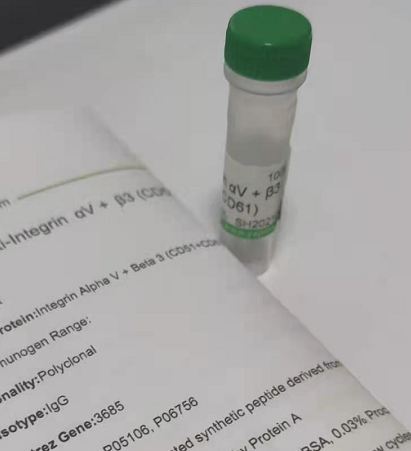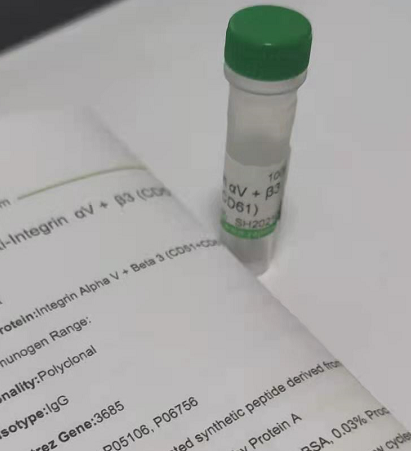| 產(chǎn)品編號(hào) | Ys-1254R |
| 英文名稱 | Apolipoprotein D |
| 中文名稱 | 載脂蛋白D抗體 |
| 別 名 | Apolipoprotein D; APOD; APO D; APOD protein; APOD_HUMAN; Apolipoprotein D; Apo-D; ApoD. |
| 抗體來源 | Rabbit |
| 克隆類型 | Polyclonal |
| 交叉反應(yīng) | Mouse, Rat, (predicted: Human, Dog, Pig, Cow, Rabbit, ) |
| 產(chǎn)品應(yīng)用 | WB=1:500-2000 ELISA=1:5000-10000 IHC-P=1:100-500 IHC-F=1:100-500 IF=1:100-500 (石蠟切片需做抗原修復(fù)) not yet tested in other applications. optimal dilutions/concentrations should be determined by the end user. |
| 理論分子量 | 19kDa |
| 細(xì)胞定位 | 分泌型蛋白 |
| 性 狀 | Liquid |
| 濃 度 | 1mg/ml |
| 免 疫 原 | KLH conjugated synthetic peptide derived from human APOD: 81-189/189 |
| 亞 型 | IgG |
| 純化方法 | affinity purified by Protein A |
| 緩 沖 液 | 0.01M TBS(pH7.4) with 1% BSA, 0.03% Proclin300 and 50% Glycerol. |
| 保存條件 | Shipped at 4℃. Store at -20 °C for one year. Avoid repeated freeze/thaw cycles. |
| 注意事項(xiàng) | This product as supplied is intended for research use only, not for use in human, therapeutic or diagnostic applications. |
| PubMed | PubMed |
| 產(chǎn)品介紹 | Apolipoprotein D (APO D), a glycoprotein involved in the human plasma lipid transport system. It is a progesterone binding glycoprotein of 24,000 dalton monomer molecular size, is a constituent of high density lipoprotein in plasma. The function of apolipoprotein D in the metabolism of plasma lipoproteins is unclear but the observation that this protein forms complexes with lecithin: cholesterol acyltransferase has led to the suggestion that apolipoprotein D may be involved in cholesterol esterification and transport of substrates and products of the reaction. Apolipoprotein D is expressed in a range of normal tissues including axillary apocrine glands, adrenal cortex and corpus luteum. Peripheral nerves, pituitary, testis, cerebellum and renal tubes are also positive. APO D was first isolated in large quantity as GCDFP 24, the major protein component of most human breast cyst fluids. In recent studies, Apo D immunoreactivity has been shown to be an early indicator of prostate cancer and advanced primary prostate tumors. Function: APOD occurs in the macromolecular complex with lecithin-cholesterol acyltransferase. It is probably involved in the transport and binding of bilin. Appears to be able to transport a variety of ligands in a number of different contexts. Subunit: Homodimer. In plasma, also exists as a disulfide-linked heterodimer with APOA2. Subcellular Location: Secreted. Tissue Specificity: Expressed in liver, intestine, pancreas, kidney, placenta, adrenal, spleen, fetal brain tissue and tears. Post-translational modifications: N-glycosylatd. N-glycan heterogeneity at Asn-65: Hex5HexNAc4 (major) and Hex6HexNAc5 (minor); at Asn-98: Hex5HexNAc4 (minor), dHex1Hex5HexNAc4 (major), dHex1Hex6HexNAc5 (minor) and dHex1Hex7HexNAc6 (minor). Similarity: Belongs to the calycin superfamily. Lipocalin family. SWISS: P05090 |
我要詢價(jià)
*聯(lián)系方式:
(可以是QQ、MSN、電子郵箱、電話等,您的聯(lián)系方式不會(huì)被公開)
*內(nèi)容:









